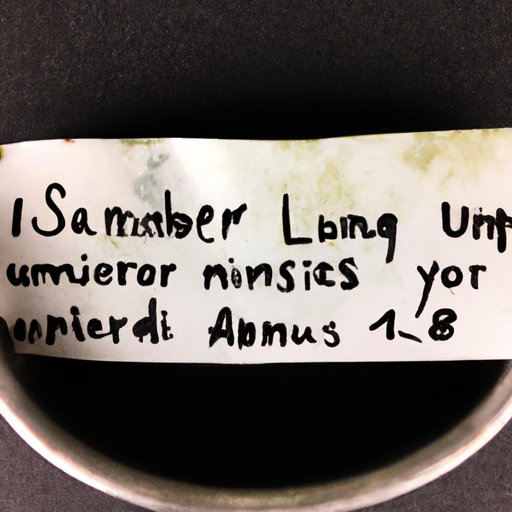
Introduction
Whether you’re a seasoned writer or just beginning to explore the world of poetry, learning to create captivating poems can be an enriching and fulfilling experience. Poetry is one of the oldest forms of creative expression, with the power to convey feelings, capture moments, and inspire deep thought and reflection.
In this guide, we’ll explore seven simple steps to start writing poetry today, examine the power of imagery, how to find your unique poetic voice, experiment with form, and draw inspiration from the classics. We’ll also provide practical tips for submitting your work to Poetry Foundation.
7 Simple Steps to Start Writing Poetry Today
Step 1: Finding inspiration. Writing poetry starts with finding inspiration. Inspiration can come from anywhere – nature, relationships, life experiences, or even your emotions. The key is being open to inspiration and actively seeking it out.
Step 2: Choosing a theme or topic. Once you’ve found inspiration, choose a theme or topic that speaks to you. This could be anything from love to loss, nature to politics, or anything in between.
Step 3: Selecting a poetic form. There are many different poetic forms to choose from, including haiku, sonnet, free verse, and more. Consider the mood and tone you want to convey and select a form that complements it.
Step 4: Building strong imagery. Imagery is a critical element of successful poetry. It allows the reader to visualize and experience the emotions and ideas you convey through words. Use descriptive language and sensory details to create strong, vivid images in your reader’s mind.
Step 5: Paying attention to sound and rhythm. The sound and rhythm of your poems are essential elements of creating a powerful work. Consider using literary devices such as alliteration, assonance, and rhyme to improve the sound of your poetry.
Step 6: Editing and revising. Revising and editing are essential steps in the writing process. Take the time to read your poems aloud and tweak them as needed to improve flow, imagery, and clarity.
Step 7: Sharing and receiving feedback. Share your work with others to get feedback and refine your craft. Join a poetry writing group, share your work with friends and family, or submit your poems to literary magazines for consideration.
The Power of Imagery in Poetry: How to Paint Pictures with Words
The best poems have the power to transport readers to another place and time, making them feel like they are living and breathing the emotions and experiences of the poet. One of the most powerful ways that poets achieve this effect is through the use of imagery.
Imagery is the use of descriptive language and sensory details to create vivid and compelling mental images. When you read a poem, you should feel like you can see, hear, taste, touch, and smell the world that the poet is describing.
To create strong imagery in your poetry, consider the sensory details that will help your reader envision the scene you are setting. Use specific language, similes, and metaphors to paint a clear picture in the reader’s mind.
Examples of effective imagery in poetry include lines like “the moon was a spotlight on the playground,” from Sandra Cisneros’ “The House on Mango Street,” which creates a clear, tangible image of the scene. Another example is “she wore her heart on her sleeve,” which is an idiom that uses imagery to convey the speaker’s vulnerability.
Finding Your Voice: How to Write Poetry That Sounds Like You
Every poet has their unique voice. Your voice is the particular way that you use language and sounds to convey your ideas and emotions. Developing your poetic voice is essential to creating work that is authentic and powerful.
To find your unique voice, start by reading poetry from a variety of poets and styles. This will give you a sense of what’s out there and help you develop your own style. Practice writing poetry in different styles and formats until you find one that feels natural to you.
An essential technique to finding your voice is to write intuitively, allowing your thoughts and emotions to flow onto the page without censorship or self-judgment. This will help you access your most authentic voice and style. You can then revise and refine your work until it feels true to you.
Examples of poets with distinctive voices include Maya Angelou, Edgar Allan Poe, and Langston Hughes. Each of these poets has a unique style, tone, and way of using language that make their work instantly recognizable.

Beyond Rhyme and Meter: Experimenting with Form in Poetry
Traditional poetic forms, like sonnets and haiku, have strict rules around rhyme and meter. While these can be beneficial for developing your poetic craft, there is also room for experimentation and exploration in poetry.
Experimental poetic forms provide an opportunity to push the boundaries of what poetry can be. These forms use unique structures, shapes, and motifs to convey the poet’s ideas and emotions. Examples of experimental forms include concrete poetry, blackout poetry, and cento poetry.
To create your own poetic form, start by experimenting with the traditional forms and experimenting by changing the rules around rhyme and meter. You can also draw inspiration from your favorite writers and artists to create something new and exciting.
Reviving the Classics: How to Write Poetry Inspired by the Masters
For centuries, poets have drawn inspiration from the timeless works of the classical masters, like William Shakespeare, John Keats, and Emily Dickinson. Authors today can continue this tradition by drawing upon the poetic greats to inform their own work.
One useful technique for approaching classic works for inspiration is to focus on a specific element of a poem, such as the imagery or rhythm. You can also try writing a modern interpretation of a classic poem or channeling the author’s style and voice in your work.
Many contemporary poets have drawn inspiration from classical works with fantastic results. Examples include Claudia Rankine’s “Rankine Citizen,” which is a meditation on the life of Serena Williams, and Terrance Hayes’ “American Sonnet for My Past and Future Assassin,” which combines traditional poetic form with modern language and themes.
From Inspiration to Publication: A Guide to Submitting Your Poems to Poetry Foundation
Submitting your poems to literary magazines and websites like Poetry Foundation can be an exciting and rewarding experience. But it’s essential to approach the submission process with professionalism and accuracy.
When submitting to Poetry Foundation, carefully review their submission guidelines. These guidelines will provide you with information about formatting, length, and other requirements essential for having your work considered.
To increase your chances of success, select poems that you believe best represent your poetic voice and style. Be sure to organize and format your work correctly and proofread thoroughly before hitting send.
Conclusion
Writing poetry is a deeply personal and enriching experience. Whether you’re an established writer or just starting, there’s no better time than now to begin your journey into the world of poetry. By following the steps outlined in this guide, you’ll be well on your way to creating work that is authentic, unique, and impactful.




